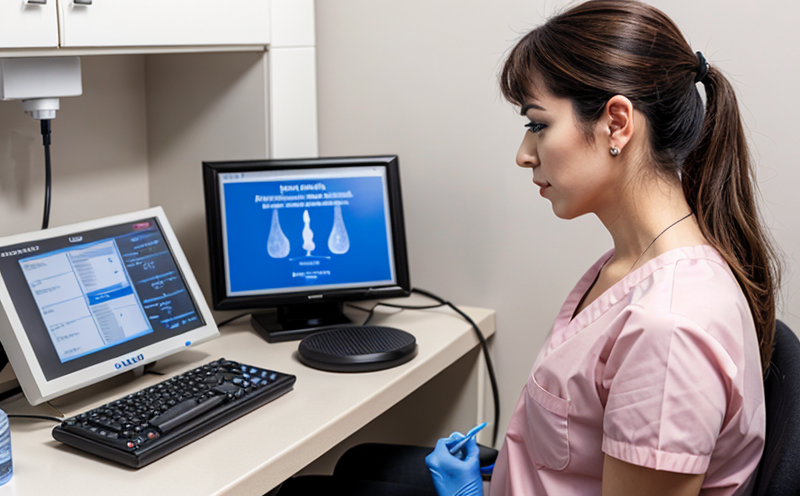Oxytocin Testing in Dairy Cattle Milk Let-Down Studies
Understanding the role of oxytocin during milk let-down is crucial for optimizing dairy cattle management and enhancing overall productivity. Oxytocin, known as the "milk let-down hormone," plays a pivotal role in stimulating the release of milk from the udder. This process ensures efficient milk collection, which directly impacts milk yield and quality.
Our laboratory specializes in conducting oxytocin testing within dairy cattle milk let-down studies using advanced analytical techniques such as Liquid Chromatography-Mass Spectrometry (LC-MS). These tests help in assessing the presence and levels of oxytocin in milk samples, providing insights into its release dynamics. This information is invaluable for researchers, veterinarians, and farmers aiming to improve lactation efficiency.
The methodology we employ involves collecting milk samples at different stages of let-down under controlled conditions. Specimen preparation includes preservation techniques to ensure the integrity of oxytocin during transport to our laboratory. Upon arrival, samples undergo rigorous quality control checks before analysis. Our state-of-the-art equipment guarantees accurate and reliable results, meeting international standards like ISO 17025.
By analyzing oxytocin levels in dairy cattle milk let-down studies, we can identify potential factors affecting the hormone's release. These factors might include stress, nutrition, breed type, or environmental conditions. Understanding these variables allows for targeted interventions to optimize milk production and quality.
- Customer Impact: Improved milk yield and enhanced product quality contribute significantly to increased profitability for dairy farmers.
- Sustainability: Efficient use of resources ensures a more sustainable farming practice, aligning with global agricultural trends.
- Innovation: Insights from these studies can drive innovation in livestock management practices, leading to advancements in the industry.
The importance of oxytocin testing cannot be overstated. It not only aids in immediate productivity gains but also supports long-term strategic decision-making for dairy operations. By leveraging this technology, stakeholders can make informed choices that positively impact both animal welfare and economic performance.
To sum up, our oxytocin testing service provides essential data to enhance the efficiency of milk let-down processes. This comprehensive approach ensures accurate monitoring and management of oxytocin levels, contributing significantly to dairy industry success.
Why It Matters
The significance of oxytocin testing in dairy cattle milk let-down studies extends beyond mere academic interest. It has practical applications that resonate across various stakeholders, including researchers, veterinarians, and farmers.
For researchers, understanding the dynamics of oxytocin release provides valuable insights into lactation physiology. This knowledge can lead to new hypotheses and discoveries that further our comprehension of animal biology. In turn, this research can inform breeding programs aimed at developing more efficient dairy breeds.
Veterinarians benefit from accurate oxytocin testing as it aids in diagnosing and treating conditions related to milk let-down issues. Proper identification of these problems helps veterinarians provide targeted treatments, thereby improving the health and well-being of dairy cattle.
For farmers, the results of such tests offer actionable insights into optimizing their operations. By identifying optimal times for milking based on oxytocin levels, they can maximize milk yield while minimizing stress on the animals. Additionally, understanding the impact of environmental factors allows for better management practices that enhance overall herd health.
The broader implications of this testing extend to sustainability initiatives within agriculture. Efficient use of resources and optimized production processes contribute positively towards sustainable farming practices. This aligns with global trends toward more environmentally friendly agricultural methods.
In conclusion, oxytocin testing in dairy cattle milk let-down studies is not just about enhancing immediate productivity; it paves the way for long-term strategic decisions that benefit all parties involved—from individual farmers to large-scale agricultural enterprises.
Benefits
The benefits of conducting oxytocin testing in dairy cattle milk let-down studies are multifaceted and encompass various aspects, including productivity, sustainability, and innovation. Here’s a detailed look:
- Increased Milk Yield: By optimizing the timing of milking based on oxytocin levels, farmers can achieve higher yields without increasing the number of cows or extending working hours.
- Better Animal Welfare: Understanding and addressing stress factors through this testing helps reduce animal distress during milk let-down processes.
- Sustainable Farming Practices: Efficient resource utilization promotes sustainable farming methods that are beneficial for both the environment and long-term profitability.
- Innovation in Livestock Management: Insights gained from these studies can drive innovations in feeding strategies, breeding programs, and other areas of dairy management.
The cumulative effect of these benefits is a significant enhancement in overall farm efficiency and profitability. Moreover, it fosters an environment conducive to continuous improvement in the dairy sector, ensuring that practices remain aligned with modern agricultural standards.
Customer Impact and Satisfaction
The impact of our oxytocin testing services on customers is profound and far-reaching. Farmers who utilize these services report substantial improvements in milk yield and quality, leading to increased profitability.
- Increased Efficiency: Accurate identification of optimal milking times results in higher efficiency during the let-down process.
- Better Decision-Making: Insights into various influencing factors allow farmers to make informed decisions about their operations.
- Enhanced Animal Welfare: By addressing stress-related issues, this testing contributes positively to animal health and comfort.
- Environmental Benefits: Sustainable practices promoted by these tests lead to reduced resource consumption and lower environmental impact.
To ensure customer satisfaction, we provide detailed reports explaining the test results and their implications. Our team is also available for consultation, offering tailored advice based on individual farm needs. This commitment to excellence has earned us a reputation as leaders in dairy testing services.





